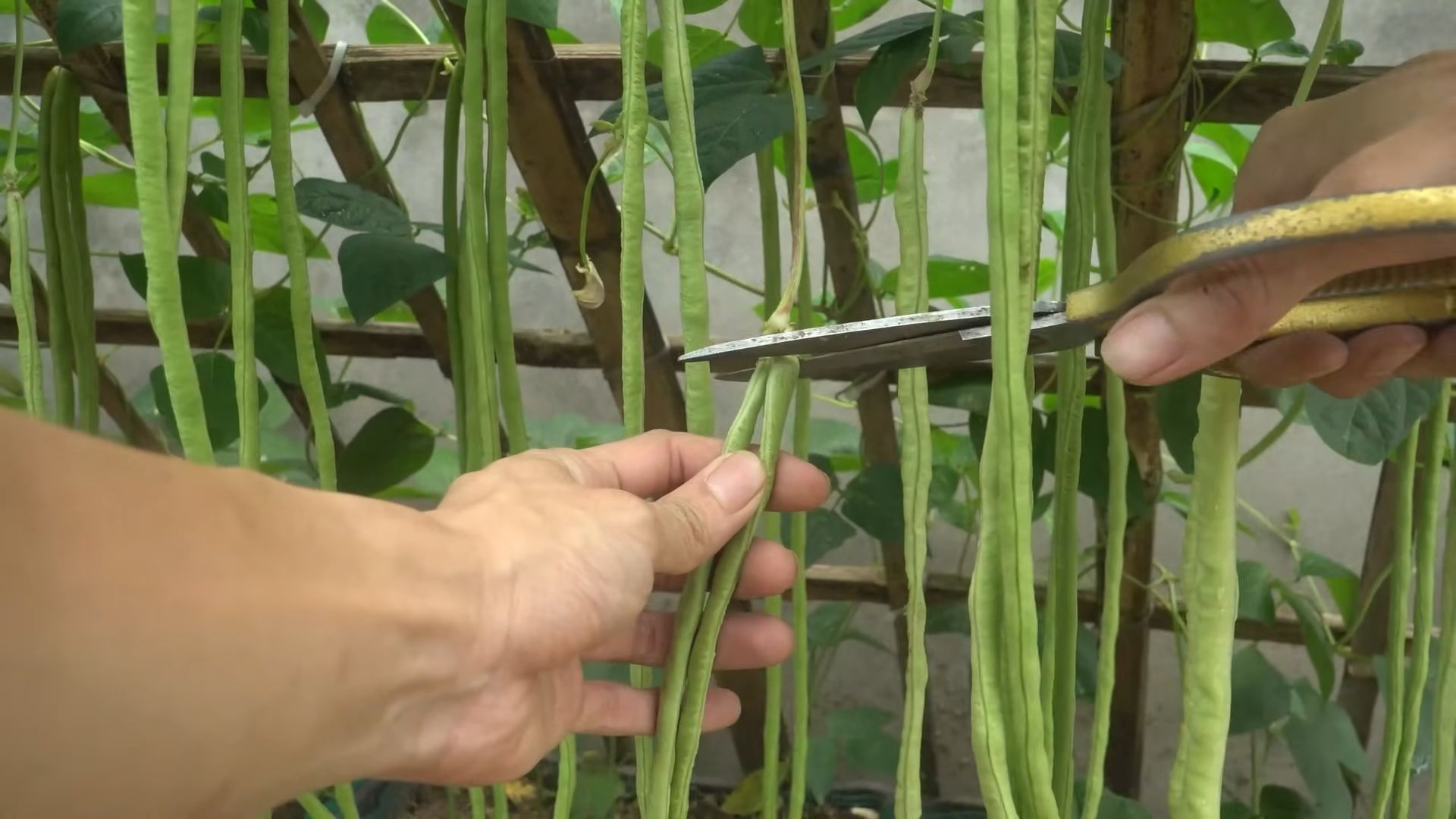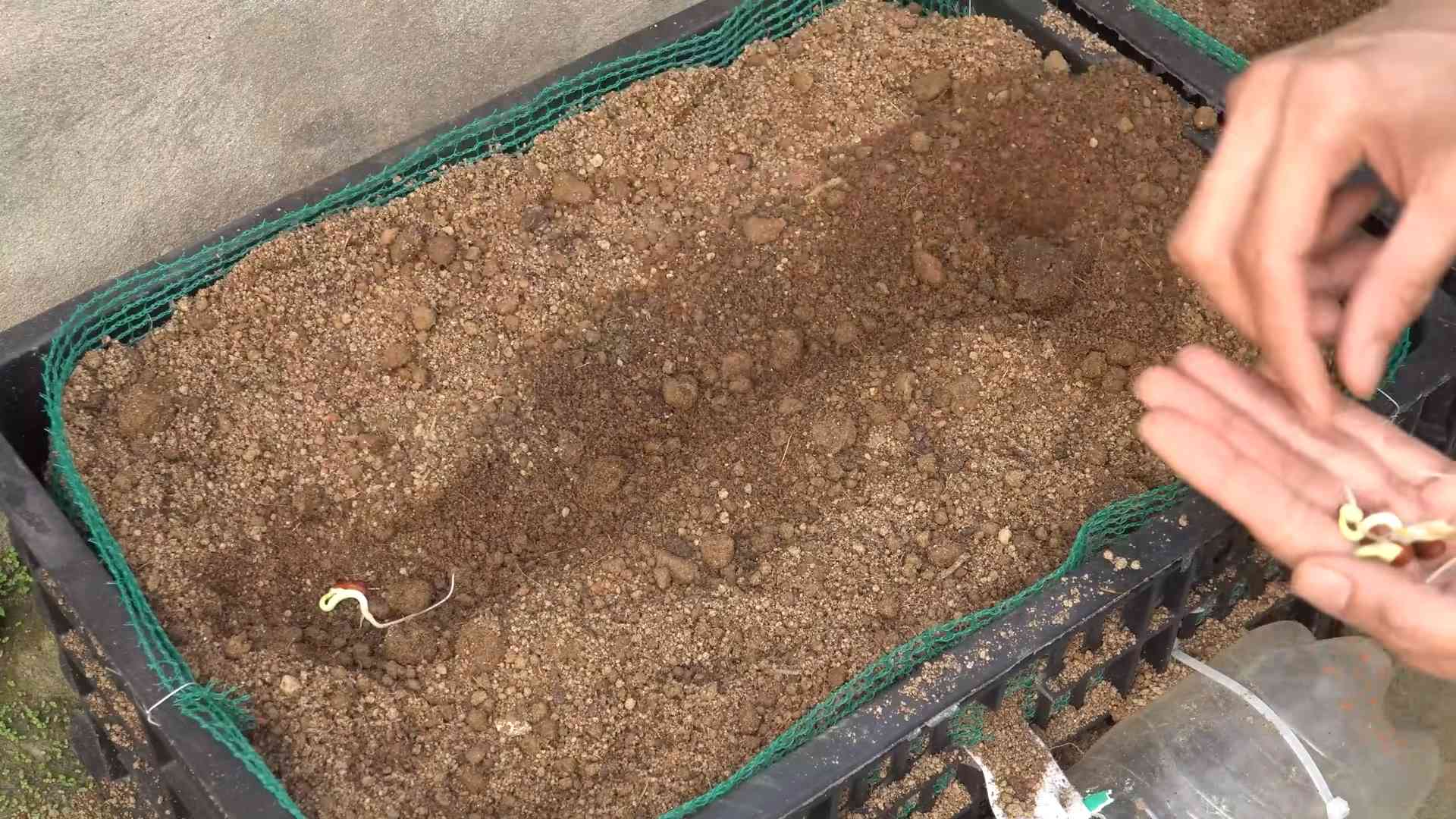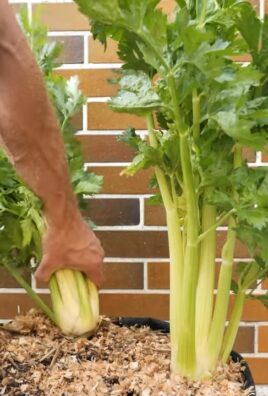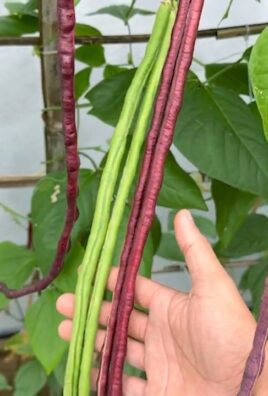Long Bean Gardening Guide: Your Path to a Bountiful Harvest
Long bean gardening might seem daunting, but I’m here to tell you it’s surprisingly achievable, even for beginners! This Long Bean Gardening Guide is your passport to a flourishing garden bursting with delicious, homegrown long beans. I’ve compiled a collection of simple yet effective DIY tricks and hacks that will transform your gardening experience, from seed to succulent harvest.
For centuries, cultivating long beans has been a cherished tradition across many cultures, representing sustenance, community, and a connection to the earth. Whether you’re inspired by ancestral practices or simply seeking fresh, flavorful ingredients, this guide will empower you to grow your own. Imagine the satisfaction of biting into a crisp, tender long bean you nurtured from a tiny seed – that’s the magic of home gardening!
Why This Long Bean Gardening Guide Matters
In today’s fast-paced world, many of us crave a deeper connection with nature and healthier food options. This Long Bean Gardening Guide provides you with the knowledge and practical steps to achieve both. Growing your own long beans not only ensures you have access to pesticide-free produce but also offers a rewarding hobby that connects you to the cycle of life. You’ll learn how to overcome common challenges, optimize your yield, and ultimately enjoy the fruits (or should I say, vegetables!) of your labor.
So, let’s embark on this exciting journey together! This guide is packed with practical DIY tips, from creating the perfect soil mix to dealing with pests and diseases. Get ready to transform your backyard (or even balcony!) into a thriving long bean paradise. Let’s get started!

My Long Bean Gardening Adventure: A Complete Guide
I’ve always loved long beans, those slender, vibrant green pods bursting with flavor. So, I decided to take on the challenge of growing my own. It wasn’t as daunting as I initially thought, and I’m here to share my experience with you, step-by-step. Get ready to harvest your own delicious long beans!
Phase 1: Planning and Preparation
- Choose the right location: Long beans need at least six hours of direct sunlight daily. Select a sunny spot in your garden with well-drained soil. Poor drainage can lead to root rot, a common problem for beans.
- Prepare the soil: Long beans thrive in fertile, loose soil. Amend your soil with compost or well-rotted manure to improve its structure and nutrient content. A soil test can help determine if you need to add any specific nutrients.
- Select your seeds or seedlings: You can start from seeds or buy seedlings from a local nursery. If starting from seeds, choose high-quality seeds from a reputable supplier. Consider different varieties to extend your harvest season – some varieties mature faster than others.
- Decide on your gardening method: You can grow long beans directly in the ground, in raised beds, or even in containers. Containers are a great option if you have limited space. Just make sure the containers are at least 12 inches deep to accommodate the roots.
Phase 2: Planting and Early Care
- Planting seeds: If starting from seeds, sow them about 1 inch deep and 2-3 inches apart. Plant several seeds per hill to increase your chances of successful germination. Keep the soil consistently moist until germination.
- Planting seedlings: If using seedlings, carefully transplant them into the prepared soil, ensuring the roots are not damaged. Space them about 18-24 inches apart to allow for proper growth and air circulation. Water them thoroughly after transplanting.
- Watering: Consistent watering is crucial, especially during dry spells. Aim for about 1 inch of water per week. Water deeply and less frequently rather than shallowly and often to encourage deep root growth. Avoid overhead watering, which can lead to fungal diseases.
- Weed control: Regularly remove weeds to prevent them from competing with your long beans for nutrients and water. Mulching around the plants can help suppress weed growth and retain soil moisture.
- Pest and disease monitoring: Regularly inspect your plants for signs of pests or diseases. Common pests include aphids, bean beetles, and spider mites. Common diseases include anthracnose and downy mildew. Address any issues promptly using appropriate organic or chemical controls.
Phase 3: Supporting the Plants and Fertilizing
- Providing support: Long bean plants are vining plants and need support to grow properly. You can use stakes, trellises, or even netting to support the vines. This prevents the plants from sprawling on the ground, which can lead to reduced yields and increased disease risk. Train the vines to climb the support structure as they grow.
- Fertilizing: Long beans are heavy feeders. Apply a balanced fertilizer every few weeks, following the instructions on the package. You can also use compost tea or other organic fertilizers to provide essential nutrients. Avoid over-fertilizing, as this can lead to excessive vegetative growth at the expense of fruit production.
- Pollination: Long beans are self-pollinating, but you can encourage pollination by gently shaking the plants or providing a habitat for pollinators like bees.
Phase 4: Harvesting and Storage
- Harvesting: Harvest long beans when they are young and tender, typically when they are 6-8 inches long. Harvest regularly to encourage continued production. Use sharp scissors or pruning shears to avoid damaging the plants.
- Storage: Store harvested long beans in the refrigerator in a plastic bag. They will keep for several days. You can also blanch and freeze them for longer storage.
- Dealing with pests and diseases (continued): Throughout the growing season, continue to monitor for pests and diseases. Early detection and treatment are key to preventing significant crop loss. Consider using companion planting to deter pests. For example, planting basil near beans can help repel aphids.
- Dealing with common problems: Yellowing leaves can indicate nutrient deficiencies or overwatering. Wilting can be a sign of underwatering or pest infestation. Learn to recognize the signs of common problems and address them promptly.
- Rotating crops: To prevent the buildup of pests and diseases, rotate your crops each year. Avoid planting beans in the same location for consecutive years.
- Saving seeds: Once your beans are fully mature and dry, you can save seeds for next year’s planting. Allow the pods to dry completely on the vine before harvesting the seeds. Store the seeds in a cool, dry place.
- Enjoying your harvest: Finally, enjoy the fruits of your labor! Long beans are delicious in stir-fries, salads, and soups. Experiment with different recipes and savor the taste of homegrown vegetables.
Tips for Success:
- Pay close attention to watering needs, especially during hot and dry periods.
- Regularly inspect your plants for pests and diseases.
- Harvest frequently to encourage continuous production.
- Don’t be afraid to experiment with different varieties of long beans.
Troubleshooting:
If your plants are not producing well, consider factors such as insufficient sunlight, poor soil drainage, nutrient deficiencies, or pest infestations. Adjust your gardening practices accordingly.

Conclusion
So there you have it – your comprehensive guide to achieving a bountiful harvest of long beans right in your own backyard! This DIY approach to long bean gardening, focusing on simple techniques and readily available materials, offers a rewarding experience for gardeners of all levels. From seed to succulent snack, you’ll be amazed at the ease and satisfaction of growing your own long beans. This method eliminates the guesswork and expense often associated with commercial farming, allowing you to control every aspect of the growing process, from soil composition to pest management. The result? Healthier, tastier, and more sustainable long beans than you’ll find anywhere else. This isn’t just about growing vegetables; it’s about connecting with nature, understanding the life cycle of a plant, and enjoying the fruits (or rather, beans!) of your labor. The sense of accomplishment is unparalleled.
Beyond the basic techniques outlined, there’s a world of possibilities for experimentation and customization. Consider experimenting with different varieties of long beans – some boast unique colors, flavors, and textures. You might explore climbing varieties for vertical gardening, maximizing space in smaller gardens or utilizing trellises to create a visually stunning and productive landscape. Alternatively, bush varieties are perfect for those with limited space or a preference for a less sprawling plant. Don’t be afraid to try companion planting! Marigolds, for instance, are known to deter certain pests that might target your long beans. Similarly, incorporating herbs like basil or mint can add another layer of flavor to your garden and potentially improve the overall health of your plants. The possibilities are truly endless, and the best way to discover your perfect long bean gardening approach is to experiment and find what works best for you and your environment.
We strongly encourage you to embark on this rewarding journey of DIY long bean gardening. Share your experiences, successes, and even your challenges with us and other gardening enthusiasts. Your feedback and insights are invaluable in helping others achieve their own green thumbs and bountiful harvests. Post pictures of your thriving long bean plants on social media, using the hashtag #DIYLongBeanGardening, and let’s build a community of passionate gardeners who are committed to sustainable and delicious food production. Remember, even small successes are significant steps towards a more self-sufficient and fulfilling lifestyle. So, grab your seeds, prepare your soil, and get ready to experience the joy of harvesting your own homegrown long beans. You won’t regret it!
Frequently Asked Questions
What type of soil is best for growing long beans?
Long beans thrive in well-drained, fertile soil with a slightly acidic to neutral pH (6.0-7.0). Amend heavy clay soils with compost or other organic matter to improve drainage and aeration. Sandy soils may benefit from the addition of organic matter to retain moisture. A soil test can help determine your soil’s pH and nutrient levels, allowing you to tailor your soil amendments accordingly. Remember, healthy soil is the foundation for healthy plants!
How much sunlight do long beans need?
Long beans are sun-worshippers! They require at least six to eight hours of direct sunlight per day to flourish. Choose a location in your garden that receives ample sunlight throughout the day. Insufficient sunlight can lead to poor growth, reduced yields, and weaker plants. Observe your garden throughout the day to identify the sunniest spots.
When is the best time to plant long beans?
The optimal planting time depends on your climate. In warmer climates, you can direct sow seeds after the last frost, typically in spring. In cooler climates, starting seeds indoors several weeks before the last frost is recommended. Check your local frost dates to determine the best planting time for your area. Remember to harden off seedlings before transplanting them outdoors.
How often should I water my long beans?
Consistent watering is crucial for healthy long bean growth. Aim to keep the soil consistently moist, but not waterlogged. Water deeply and less frequently, rather than shallowly and often. The frequency of watering will depend on your climate, soil type, and weather conditions. Observe the soil moisture levels regularly and adjust your watering schedule accordingly. Mulching can help retain soil moisture and reduce the frequency of watering.
What are some common pests and diseases that affect long beans?
Long beans can be susceptible to various pests and diseases, including aphids, bean beetles, and fungal diseases like anthracnose and downy mildew. Regularly inspect your plants for signs of pests or diseases. Implementing preventative measures, such as crop rotation, companion planting, and maintaining good garden hygiene, can help minimize pest and disease problems. Organic pest control methods, such as insecticidal soap or neem oil, can be used to address infestations. For fungal diseases, ensuring good air circulation and avoiding overhead watering can help prevent outbreaks.
How do I harvest long beans?
Harvest long beans when they are young and tender, typically when they are 6-8 inches long. Harvesting regularly encourages continued production. Use sharp scissors or pruning shears to snip the beans from the plant, leaving a short stem attached. Avoid pulling the beans, as this can damage the plant. Harvesting at the right stage ensures the best flavor and texture. Enjoy your fresh, homegrown long beans!
Can I save seeds from my long beans for next year?
Yes, you can save seeds from your long beans for planting the following year. Allow some beans to mature fully on the plant until they turn dry and brown. Then, carefully remove the seeds from the pods and allow them to dry completely in a cool, dry place. Store the dried seeds in airtight containers in a cool, dark, and dry location. Proper seed saving ensures you have a supply of seeds for future plantings. Remember to label your seeds with the variety name and the year they were harvested.




Leave a Comment